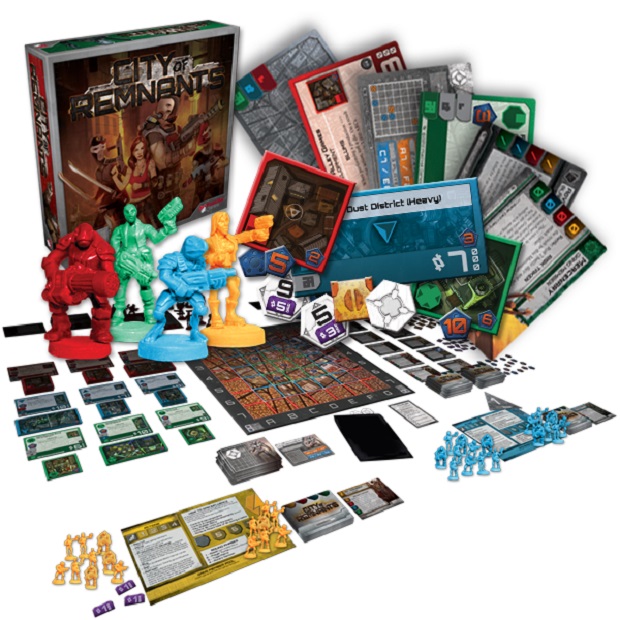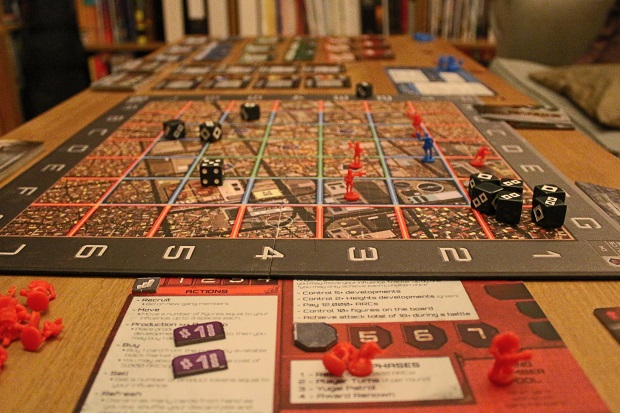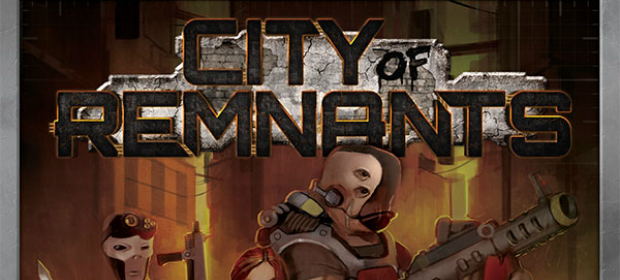Imagine you’ve been taken from your home and dumped on a planet full of refugees from other locations. The people that have taken you are keeping you under their iron boots through fear and a nice high death toll. What would happen if you put together a gang in an attempt to overthrow these overlords, and what if other people had exactly the same idea at exactly the same time? This is the premise of City of Remnants, a board game from Plaid Hat Games and designed by the team of Isaac Vega & Colby Dauch which pits up to four players against each other – and, in turn, against the evil Yugai Corporation – in an attempt to gain the most Renown before the match ends. It’s a game of tactics, underhanded moves, and a healthy amount of luck, but can something as complex as City of Remnants be fun to play too?
The setup for City of Remnants takes a good deal of time. For a game that can be played by two people, you’re going to have to set aside a good 20 – 30 minutes just to get everything ready. The selection of a gang, the creation of a deck, setting up the player card and then setting up the “shops” and the available developments all need to be done before you even start to play the game. If you’ve played a couple of games before, and you know what you’re going to need and how to set it up without looking at the instruction, you could probably shave the set-up time down to 10 – 15 minutes, but it’s still a healthy length of time.
The game itself isn’t easy to understand, either, a fact that isn’t helped by the instruction manual being quite badly written, going over certain aspects of the game multiple times, making things much more confusing than they need to be, and then totally missing some details altogether. The only way we were able to set up the game properly was by using the instructions in conjunction with a picture showing the game after having been set up. If it wasn’t for this – as well as some creative thinking – we wouldn’t have had a chance.

After half an hour of setup, an hour of attempting to read the instructions and then a further half an hour watching the ‘How To Play’ video on the Plaid Hat Games YouTube channel (which we highly recommend), we were finally ready to get down to some gameplay.
Everything in City of Remnants depends heavily on the amount of Influence that you have on your player mat. Influence determines quite a few things in the game: how many spaces each of your gang members are allowed to move, how many cards you can collect from the deck at the start of the round and a couple of other modifiers over the course of the game. Increasing this Influence will make your gang stronger and more profitable, which will, in turn, help you to win the game. There are a couple of ways to increase your Influence, but none of them are easy (or cheap) so you’re going to have to decide the best time to do so in order to avoid shooting yourself in the foot.
Each round of City of Remnants consists of four phases: the Reset Phase, the Player Turn Phase, the Yugai Patrol Phase and the Renown Reward Phase. This is the most confusing aspect of the entire game as it doesn’t work like a normal board game in which the player would keep going round the table progressing through the phases like normal. Basically, ignoring the Reset Phases as it’s fairly self-explanatory, the rest of the phases last as long as each player still has moves left. These moves are indicated by a Player Tracker marker on the player mat; each Player Turn phase lasts four moves per player and once all of the players have used their four turns, the round moves on to the next phase – the Yugai Patrol phase.

During the Yugai Patrol phase, the player with the “Player 1” token picks a card and places the Yugai Patrol tokens on the board. The players then have to fight these patrols if it makes sense for them in the game. For example, a Yugai Patrol may land on a location which has some of a player’s gang in, and the player would then be forced to either fight the patrol or bribe them. It’s a choice between losing gang members (and a card) if you lose, or almost bankrupting yourself with the buyout.
All of this makes City of Remnants something that isn’t easy to explain, but once you understand the rules, and what’s required of you, it’s quite a misleadingly fun board game to play. The more people the merrier (although expect it to last quite a while if you have more than two people).
VERDICT: City of Remnants is a game that will take a decent amount of time to learn, and when you sit down to play it – setting everything up as needed – it will seem a little bit daunting at first. Get over that though, and you’ve got a pretty interesting game, one that requires a lot more tactical thought than might be apparent at first glance. Still, if you do intend to understand the rules of City of Remnants, you may want to forgo reading the instruction manual in favour of just watching the video on Plaid Hat Games’ YouTube channel. The included manual does a better job at confusing would-be players than it does instructing them.
[nggallery id=1676]






